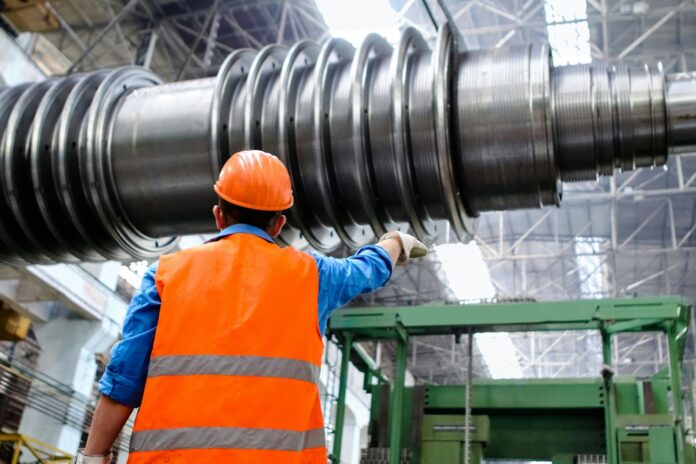In manufacturing, material selection is critical. Whether you’re making consumer goods, automobile parts, or complicated electronics, choosing the right materials can have a big impact on the success of your project. From plastics to metals and composites, each material has unique features and traits that affect utility, durability, and cost-effectiveness. Therefore, understanding the complexities of material selection is critical for attaining the best results in your manufacturing activities.
Material Properties
For optimal results in any manufacturing project, a thorough understanding of the diverse properties of materials is essential. This knowledge forms the foundation for making informed decisions that can significantly improve the quality and efficiency of the project.
- Mechanical Properties: These include qualities like strength, stiffness, toughness, and elasticity, which influence how a material reacts to applied forces.
- Thermal Properties: Heat resistance, thermal conductivity, and expansion coefficients are all important factors, especially for applications that are subjected to changing temperature conditions.
- Chemical Resistance: Certain materials are resistant to corrosion, chemicals, and environmental variables, making them appropriate for tough operating conditions.
- Electrical properties: These include conductivity, insulation, and dielectric strength are crucial in applications that include electrical components and circuits.
- Density and Weight: Material density influences component weight and overall product design, as well as issues like transportation costs and structural integrity.
Materials Applications
Metals
Steel, aluminum, and titanium are strong, durable, and thermally conductive, making them perfect for structural components in the aircraft, automotive, and construction industries. Furthermore, metals are frequently preferred for their recyclability and ability to tolerate high temperatures.
Plastics
There are several types of plastics, including thermoplastics and thermosets, each with its own set of qualities. Common plastics used in plastic injection molding, such as polyethylene, polycarbonate, and ABS, are lightweight, corrosion-resistant, and easily molded, making them useful for consumer goods, packaging, and medical applications.
Composites
Composites are made up of two or more materials that work together to maximize their particular strengths while minimizing their shortcomings. Fiberglass, carbon fiber, and Kevlar composites have high strength-to-weight ratios, making them popular in aerospace, marine, and sporting goods applications.
Ceramics
They have great hardness, heat resistance, and electrical insulating capabilities, making them ideal for producing components for electronics, automobile engines, and medical implants. However, ceramics are fragile and may necessitate specialist processing methods.
Impact on Manufacturing Methods
The choice of materials significantly influences the selection of manufacturing methods. For instance:
Injection Molding
This popular manufacturing process, known as plastic injection molding, involves pumping molten injection molding materials into a mold cavity to create complex forms with high precision. The selection of materials is critical in this process because different plastics, including key injection molding materials, exhibit variable flow properties, shrinkage rates, and thermal characteristics. To ensure compatibility with the molding process and to achieve the desired performance parameters, consultation with experienced injection molding services is essential. These professionals can guide the choice of materials, ensuring that the selected plastics align with the specific requirements of the product being manufactured.
CNC Machining
Unlike injection molding, CNC machining uses subtractive manufacturing, which removes material from a solid block to create the desired shape. Metals like aluminum, steel, and brass are frequently machined due to their machinability and dimensional stability.
Additive Manufacturing (3D Printing)
Techniques such as FDM, SLA, and SLS allow for the layer-by-layer creation of complicated geometries. 3D printing can use a variety of materials, including thermoplastics, metals, and ceramics, each with distinct qualities appropriate for certain uses.
Importance of Expert Consultation
Navigating the diverse range of materials and manufacturing methods can be difficult, particularly for complicated projects with strict performance criteria. Therefore, getting help from skilled material engineers and production professionals is critical. Experienced injection molding services may provide valuable insights into material selection by offering the best materials based on mechanical qualities, cost-effectiveness, and manufacturability.
Expert assistance can help reduce the risks associated with material selection, guaranteeing compatibility with the chosen production method, and achieving project deadlines and budget restrictions. Furthermore, cooperating with competent partners provides access to cutting-edge materials and innovative manufacturing procedures, which improves product innovation and market competitiveness.
Environmental Sustainability Considerations
Environmental sustainability has become an important consideration in material selection for manufacturing projects. Choosing materials with little environmental effect, such as recycled plastics, biodegradable polymers, and sustainably produced metals, is consistent with company sustainability goals and consumer preferences.
Manufacturers can lower their carbon footprint, generate less waste, and contribute to a circular economy by preferring ecologically friendly products. Furthermore, sustainable materials can provide comparable performance to traditional counterparts, guaranteeing that environmental responsibility does not jeopardize product quality or functioning.
Integrating environmental sustainability factors into material selection improves the environment while also improving brand reputation and consumer loyalty. As customers become more environmentally conscious, firms that adopt sustainable practices stand to gain a competitive advantage in the marketplace.
Conclusion
Choosing the appropriate materials for your manufacturing project is a multidimensional decision that necessitates careful evaluation of qualities, uses, and manufacturing methods. Whether you’re looking for high-strength structural components, lightweight consumer products, or complex electronics, choosing the right materials is critical to achieving peak performance and longevity.
Understanding the qualities and applications of various materials, as well as engaging with experienced injection molding services and material engineers, will help you confidently navigate the complexity of material selection. Finally, investing time and resources in selecting the correct materials upfront will pay off in the form of higher product quality, cost-effectiveness, and customer happiness.
Write and Win: Participate in Creative writing Contest & International Essay Contest and win fabulous prizes.

















